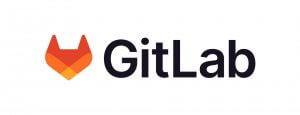Improving Embedded Software Development through CI/CD
In the dynamic domain of embedded systems, there’s an increasing need to integrate best practices from the broader software field to ensure consistent, timely, and high-quality releases. One such practice, that’s revolutionizing how embedded software is developed, is Continuous Integration and Continuous Delivery/Deployment (CI/CD). This article takes a look into the concept of CI/CD for embedded systems, and how GitLab can be an ideal solution for implementing a CI/CD pipeline.
Understanding the Importance of CI/CD in Embedded Systems
CI/CD, a pivotal concept in modern software development, is equally applicable and beneficial to the realm of embedded systems. Understanding the value of CI/CD in the embedded product development cycle can help teams streamline their processes and enhance productivity.
What is CI/CD?
Continuous Integration (CI) and Continuous Deployment/Delivery (CD) form the backbone of state-of-the-art software development practices. CI emphasizes integrating code from different team members frequently, often on a daily basis. Each integration is automatically built, analyzed, and tested to ensure early detection of integration bugs.
CD, an extension of CI, ensures that once your code is integrated and tested, it’s automatically deployed to production (Continuous Deployment) or made ready for deployment (Continuous Delivery), thereby reducing manual intervention and leading to faster releases.
The Value of CI/CD
CI/CD has the potential to dramatically improve embedded software development practices. Some of the key benefits CI/CD bring to embedded developers include:
· Faster Time-to-Market: Regularly tested and ready-to-deploy code reduces the overall development time.
· Improved Quality: Automatic testing results in fewer bugs, leading to a higher-quality product.
· Enhanced Collaboration: Teams are better aligned as they work towards a common, integrated codebase.
Building an Embedded CI/CD Pipeline
A CI/CD pipeline is the process that moves a piece of software from development into production. A typical embedded CI/CD pipeline includes automating building, testing, analyzing, and deploying software to the end users. It’s the tool that developers, QA, and operations use to improve collaboration between various teams and gain benefits such as improving software quality, decreasing the time spent debugging, reducing project costs, enhancing the ability to meet deadlines, and simplifying the software deployment process.
Core Components of a CI/CD Pipeline for Embedded Systems
A typical CI/CD pipeline for embedded systems includes continuous building of the application, static code analysis, testing, and automatic deployment to the production environment. Here’s an overview of the core components:
· Code Repositories: This is where the source code is stored.
· Automated Build System: This component takes the source code and generates executable code.
· Static Code Analysis: This analyzes the source code for potential issues such as coding standard violations, potential bugs, and security vulnerabilities.
· Testing: This includes unit tests, integration tests, and system tests to verify the functionality of the software.
· Deployment Mechanism: This is the method by which the software is delivered to the end-users.
Setting Up a Typical Embedded CI/CD Pipeline
A typical embedded CI/CD pipeline will vary based on your teams’ needs. However, at a minimum, a first-pass CI/CD pipeline should include the following stages:
1. Build: The build job will take your firmware and generate release binaries.
2. Analysis: The analysis build job will statically analyze your code. The typical analysis would include cyclomatic complexity, code metrics, and coding standard adherence such as style guide, MISRA, and/or CERT.
3. Testing: The testing job will perform all the tests required to ship the product. This might include unit, functional, integration, system, and performance tests.
4. Reporting: The reporting job will collect the results from the previous jobs to provide information about build success, analysis results, test coverage and results, and more.
5. Merge: The merge job will merge the new feature into the deployment branch when all the jobs are successful.
6. Deployment: When the merge job completes successfully, the deployment job will run and start the field deployment process.
Implementing Embedded CI/CD with GitLab
When it comes to implementing CI/CD for embedded systems, GitLab emerges as an excellent solution. GitLab provides a complete DevOps platform delivered as a single application, enabling teams to concurrently design, develop, test, secure, and deploy applications.
Why Choose GitLab for Embedded CI/CD?
· Single Application for Entire Workflow: GitLab provides a unified platform for managing the entire DevOps lifecycle, eliminating the need to integrate and manage multiple tools.
· Built-In CI/CD: GitLab comes with a powerful built-in CI/CD system that simplifies the process of setting up pipelines and reduces management overhead.
· Flexible and Scalable: GitLab is highly flexible and scalable, making it suitable for projects of all sizes.
· Advanced Features: GitLab offers advanced features such as Auto DevOps, code quality analysis, security testing, and much more.
Conclusion
Adopting CI/CD can significantly enhance the efficiency and effectiveness of embedded software development. By integrating code frequently, automating testing, and enabling continuous deployment, CI/CD practices can help embedded developers deliver high-quality software faster and more reliably. And with GitLab’s comprehensive and robust platform, implementing an embedded CI/CD pipeline can be a smooth and straightforward process.
To learn more about leveraging GitLab for embedded software development, contact 321 Gang. We work with enterprises to accelerate the engineering and development of large, engineered systems. 321 Gang Consultants work with the industry-leading system builders of embedded software on best practices for requirements management, model-based systems engineering (MBSE), test management/verification and validation, and traceability for compliance and reporting. Visit our website or contact us to learn how we can help implement CI/CD in your development environment.
For a new related article, click HERE


321 Gang | 14362 North FLW | Suite 1000 | Scottsdale, AZ 85260 | 877.820.0888 info@321gang.com
The Future is Now
We have helped our clients:
- Reduce development costs by 50-60%
- Accelerate time to market by 20-40%


